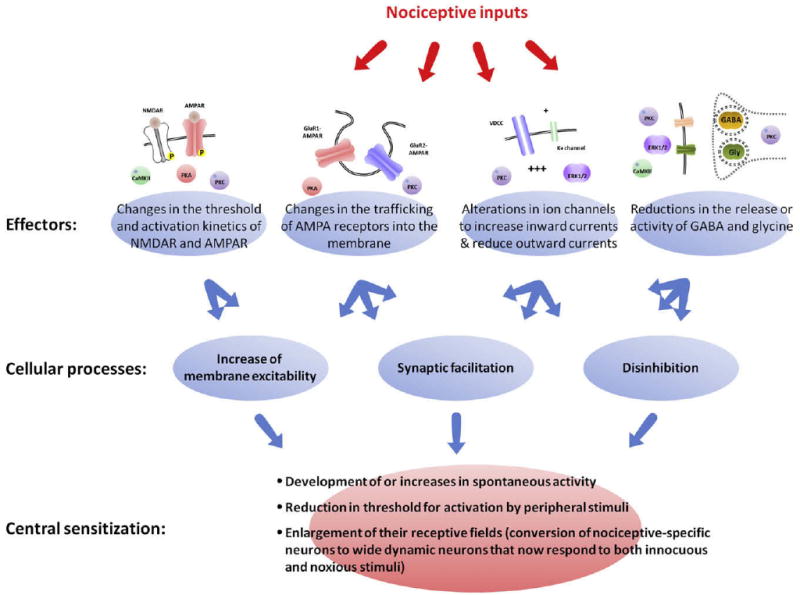Figure 9.

Multiple cellular processes lead to central sensitization. Central sensitization is not defined by activation of a single molecular pathway but rather represents the altered functional status of nociceptive neurons. During central sensitization, these neurons display 1 or all of the following: i, development of or an increase in spontaneous activity; ii, reduction in threshold for activation; and iii, enlargement of nociceptive neuron receptive fields. These characteristics can be produced by several different cellular processes including increases in membrane excitability, a facilitation of synaptic strength, and decreases in inhibitory transmission (disinhibition). Similarly, these mechanisms can be driven by different molecular effectors including PKA, PKC, CaMKII, and ERK1/2. These kinases participate in changes in the threshold and activation kinetics of NMDA and AMPA receptors and in their trafficking to the membrane, cause alterations in ion channels that increase inward currents and reduce outward currents, and reduce the release or activity of GABA and glycine.
